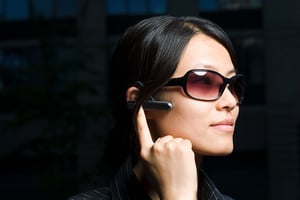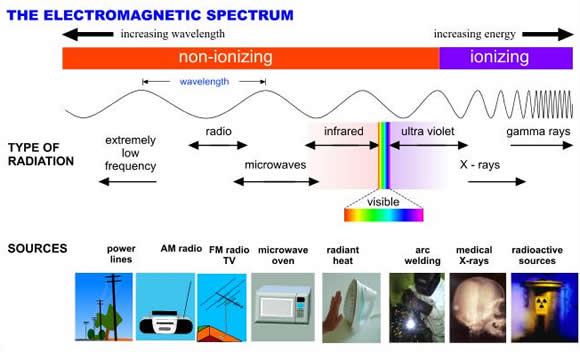Time To Read: 5 minutes
Some people concerned about mobile phone radiation also express concern about Bluetooth connectivity. We take a look Bluetooth technology and why you don’t need to worry about radiation.
 What Is Bluetooth?
What Is Bluetooth?
Bluetooth is a standard for the short-range wireless interconnection of mobile phones, computers, and other electronic devices.
It operates on a radio frequency (yes, just like radio or television).
All wireless and cordless communication products operate on a specific frequency - 2.4GHz which is considered low powered.
Other devices you’d be familiar with operating in that frequency include: baby monitors, wireless headphones, Bluetooth, Wi-Fi devices, wireless LANs, car remote entry devices and garage door remote controls.
It is also increasingly used in modern hearing aids to provide the convenience of pairing your hearing aids to mobile phones, televisions and other streaming devices. It also allows you to use your mobile phone as a ‘remote control’ for your hearing aids and, increasingly you will be able to work with your audiologist to remotely troubleshoot and reprogram your hearing aids.
Wireless Medical Devices
An increasing number of medical devices use RF (radio frequency) wireless technology (like WiFi and Bluetooth) for the convenience it offers patients and medical practitioners alike.
The US Food And Drug Administration (FDA) has said wireless technology in medical devices can has many benefits. They included increasing patient mobility by eliminating wires that tether a patient to a medical bed, providing health care professionals the ability to remotely program devices, and providing the ability of physicians to remotely access and monitor patient data regardless of the location of the patient or physician.
These benefits can positively impact patient outcomes by giving doctors access to real-time data on patients. They can also make real-time adjustment for treatment. Remote monitoring can also help special populations such as seniors, through home monitoring of chronic diseases so that changes can be detected earlier before more serious consequences occur.
What About Radiation?
Radiation is transmission of energy from a source which travels in the form of waves or particles.
We are exposed to radiation, in one form or another, each and every day. The biggest, most obvious source of radiation exposure is the sun.
Bluetooth signals are low frequency and travel over a limited distance (about 10 metres). Any radiation emitted is actually far less than your mobile phone which has to send stronger signals much further away.
According to the US Federal Communications Commission, there is currently no scientific evidence establishes a causal link between wireless device use and cancer or other illnesses.
Despite confirming that there is no evidence to suggest that mobile phones can cause cancer, The Centers for Disease Control in the United States recommends that those concerned about radiation exposure from their phones to use a wireless device (like Bluetooth) to keep the phone away from your head.
If you’re interested in discovering more about Bluetooth and radiation, we’ve found a well-written and accessible article here.
Another question we've recently been asked is about the risk of Bluetooth enabled hearing aids to be hacked. We take a look at the subject here.
Why Is It Called Bluetooth?
We’ve found a fascinating video on the origins of the technology and the connection between this late 20th century technology and a 10th century Danish King by the name of Harald Bluetooth.
Further reading
- How To Troubleshoot Hearing Aids
- How To Clean Your Hearing Aids
- What to expect from Bluetooth Hearing Aids
- Can my Bluetooth Hearing Aids get hacked?
- How we ensure your experience is consistent
- What you need to know about Hearing Aid Insurance
- Reduce clinic visits without sacrificing outcomes
- Do I really need such an expensive hearing aid?
- Introducing Bluetooth Hearing Aids
